After the killing of foreign sailors on Taiwanese soil and the resultant Mudan Incident of 1874, which threatened the Qing’s claims on Taiwan, Chinese authorities decided to beef up defenses in the south by constructing a wall around what is today’s Hengchun Township (恆春) in Pingtung County. Today, it has the distinction of being the only city wall left in Taiwan with all of its original gates still intact.
Not only are the original gates still intact, but most of the original wall is still standing, and open to the public. A walk along — and often on top of — the wall is a great way to get familiar with the town and see a bit of history. At only 2.5 km around, an hour or two on foot is enough to finish the entire loop.
Standing in front of the Hengchun bus station, the original South Gate is visible at the end of Nanmen Road (南門路, literally “South Gate Road”) nearly straight ahead. This is the most ornate of the old city gates and a fitting place to begin the walk. For over a century, this has been the gateway to Kenting (墾丁). At one point, a rail line even ran through the gate down to Nanwan (南灣). Nowadays, vehicle traffic heading to Kenting still leaves the city on this same road, but now passes around the gate in a roundabout. After taking a few moments to admire the reconstructed tower atop the gate, start your tour of the wall itself by turning east along Lane 14, Nanmen Road.
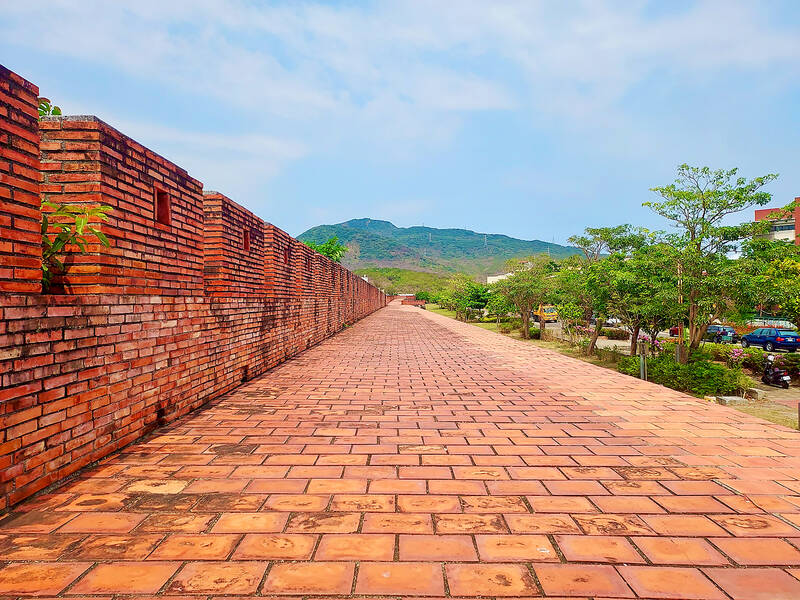
Photo: Tyler Cottenie
AROUND THE TOWN
Remnants of the wall are visible on the until the junior high school is reached. Here, a section of the wall was demolished to make room for the schoolyard. More recently, however, a steel-and-wood elevated walkway was built along the original wall’s path, allowing pedestrian traffic to continue following the route of the old city wall without blocking the schoolyard below.
On the far side of the schoolyard, the walkway reconnects to the top of the original wall, which is then intact all the way to the East Gate. The inscription above this gate, as with the South Gate, states that the gate was built in the first year of the Guangxu Emperor, i.e., 1875. At that time, the Alangyi Trail (阿朗壹古道), which connected Hengchun with Taitung County, began here. Nowadays, County Road 200 leaves from beside the gate, leading to Jialeshuei (佳樂水) on the eastern side of the National Park, or to Syuhai Village (旭海), where a section of the old Alangyi Trail is still preserved.
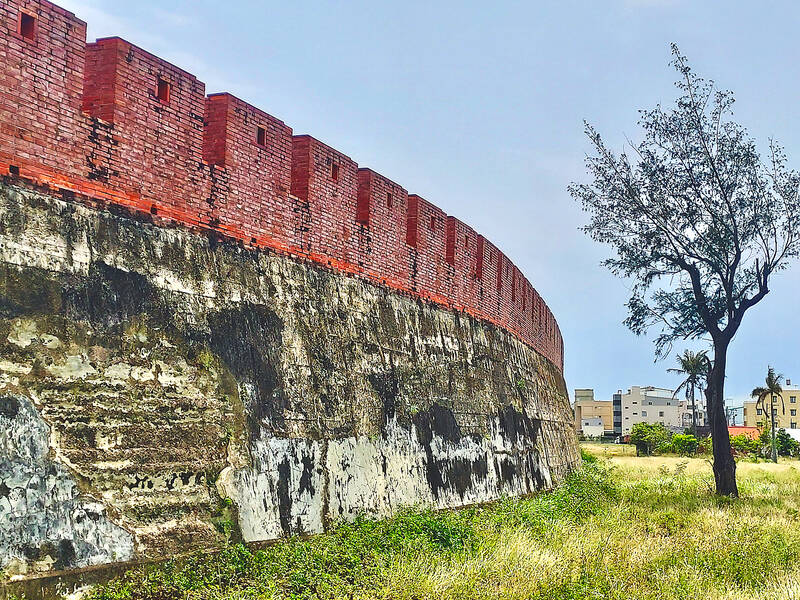
Photo: Tyler Cottenie
‘GHOST GRAPPLING’
After climbing back up onto the wall on the other side of the road and continuing counterclockwise, you will pass by a high platform with 36 poles underneath it. This is where the annual “ghost grappling” (搶孤) festival takes place, during which teams form human towers and try to climb up heavily greased poles to a platform above. This year’s competition is set to take place this weekend, with the festivities spanning from today to Sunday, and the main event taking place Sunday evening.
Next up is the North Gate, which is still connected to the wall and allows both vehicle traffic through it and pedestrian traffic overtop of it. The land just outside of the wall around here is still undeveloped; the landscape of wild grasses and coconut trees probably hasn’t changed much since Qing Dynasty times.
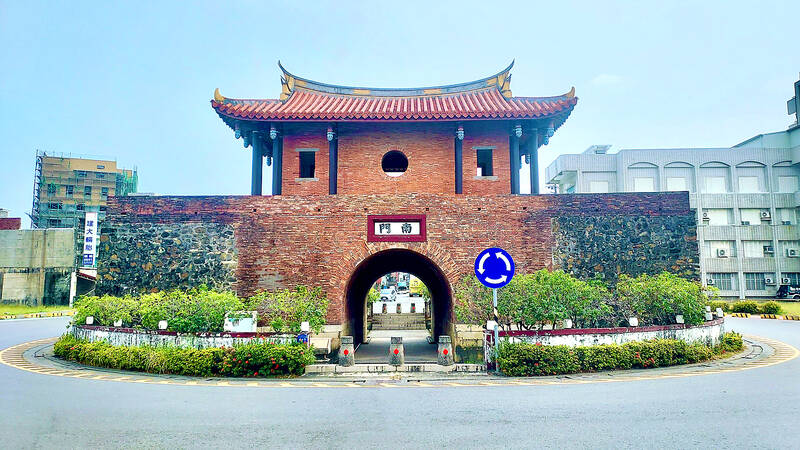
Photo: Tyler Cottenie
Back to County Road 200, where a section of the wall was again removed for the road, you will have been on the wall for an entire kilometer. The section from the East Gate to here is the longest continuous stretch of original wall still standing. After crossing the road, you may continue on top of the wall again or follow the modern paths and alleys running beside the wall for the rest of its course.
THE BUSTLING TOWN CENTER
Just 100 meters ahead is the West Gate. Be careful walking around here as scooters run through the passage frequently, sometimes at high speeds. Larger vehicles need to be careful, too: this is the gate where a campaign truck for Ko Wen-je (柯文哲) got stuck last year. A temple and plaza sit just inside the gate, making this a popular spot for locals to go for a stroll or hang out. For people watching along the wall, this is your best bet.
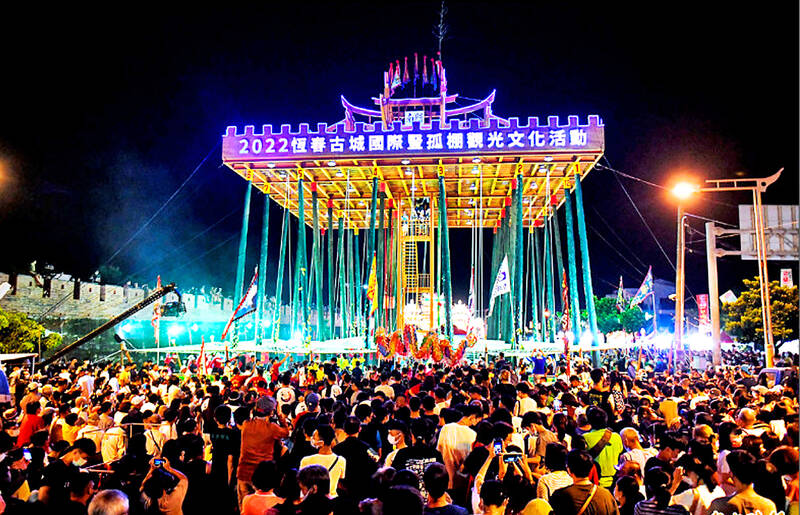
Photo: Tsai Tsung-hsien, Taipei Times
The remainder of the wall passes near Henchun Old Street and the bustling business area around it, including the Hengchun Night Market, which lies just outside the wall. Walking along the wall at night is not only quite a bit cooler, but is perhaps the most photogenic time as the wall is beautifully illuminated in the parks and plazas. If you start your loop of the old wall in the late afternoon, you will arrive in the West Gate area just as the sky is getting dark — and just in time to turn in toward the shops or the night market for a bite to eat. If you want to complete the entire loop first, the wall ends rather anticlimactically across from the Presbyterian Church, with the last 150 meters back to the South Gate having been demolished for roadways.
Exploring the wall is a great way to spend a couple of hours in Hengchun, at any time of day or at any time of the year. With the ghost grappling festival taking place this weekend, however, there’s never been a better time to visit. Hengchun is sure to be livelier than usual, with street performances and additional food vendors around. Climbing up onto the wall is a great way to take in the party atmosphere from above, or to get away from the crowds for a while if they become too overwhelming. Whenever you choose to visit Hengchun next, be sure to take a moment to appreciate one of Taiwan’s best preserved historical monuments, right in the heart of town.
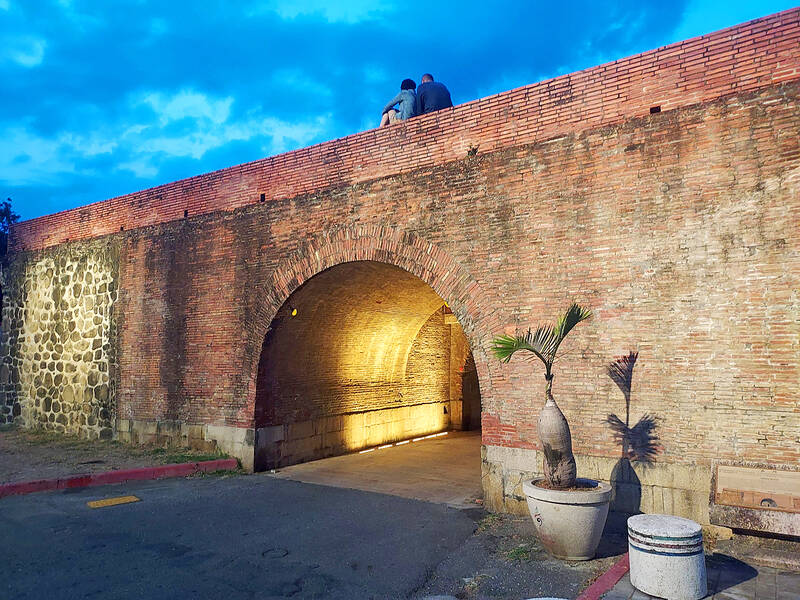
Photo: Tyler Cottenie
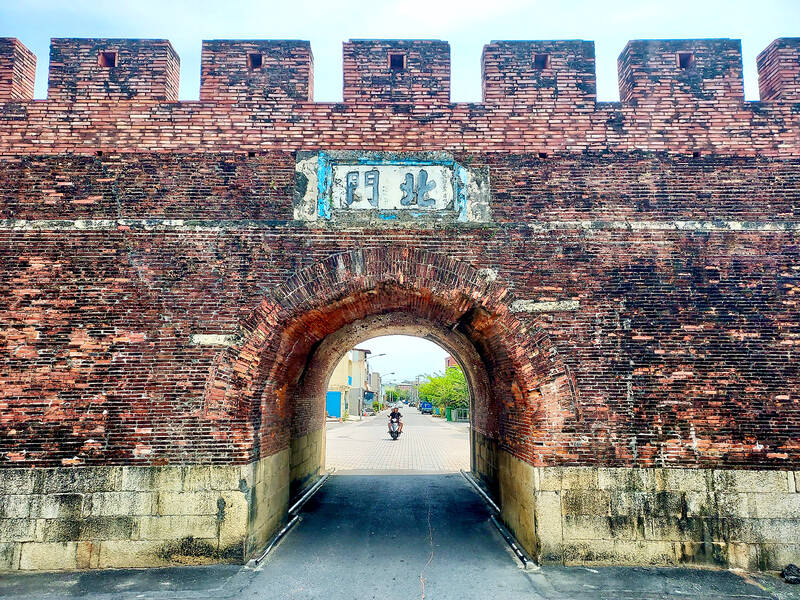
Photo: Tyler Cottenie
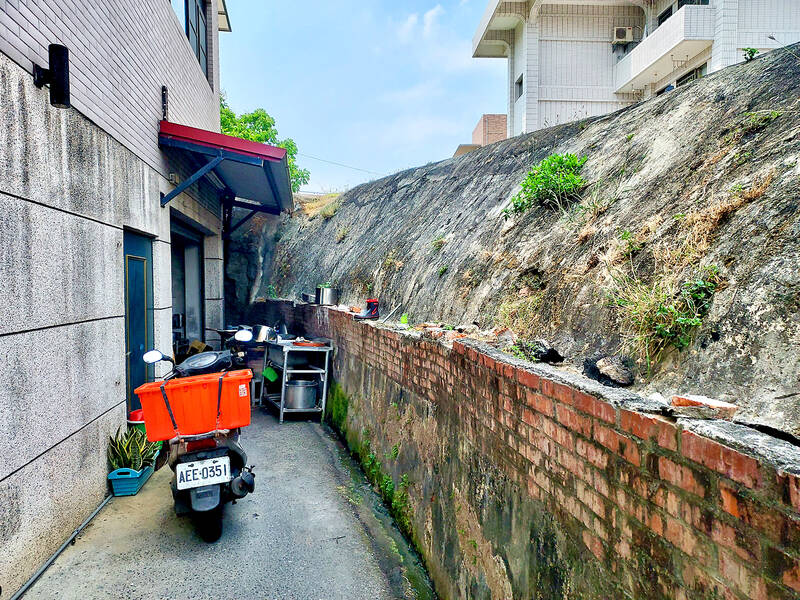
Photo: Tyler Cottenie
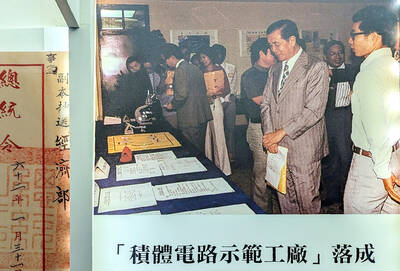
Oct. 27 to Nov. 2 Over a breakfast of soymilk and fried dough costing less than NT$400, seven officials and engineers agreed on a NT$400 million plan — unaware that it would mark the beginning of Taiwan’s semiconductor empire. It was a cold February morning in 1974. Gathered at the unassuming shop were Economics minister Sun Yun-hsuan (孫運璿), director-general of Transportation and Communications Kao Yu-shu (高玉樹), Industrial Technology Research Institute (ITRI) president Wang Chao-chen (王兆振), Telecommunications Laboratories director Kang Pao-huang (康寶煌), Executive Yuan secretary-general Fei Hua (費驊), director-general of Telecommunications Fang Hsien-chi (方賢齊) and Radio Corporation of America (RCA) Laboratories director Pan
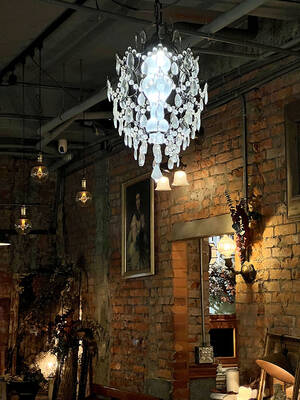
The classic warmth of a good old-fashioned izakaya beckons you in, all cozy nooks and dark wood finishes, as tables order a third round and waiters sling tapas-sized bites and assorted — sometimes unidentifiable — skewered meats. But there’s a romantic hush about this Ximending (西門町) hotspot, with cocktails savored, plating elegant and never rushed and daters and diners lit by candlelight and chandelier. Each chair is mismatched and the assorted tables appear to be the fanciest picks from a nearby flea market. A naked sewing mannequin stands in a dimly lit corner, adorned with antique mirrors and draped foliage
The consensus on the Chinese Nationalist Party (KMT) chair race is that Cheng Li-wun (鄭麗文) ran a populist, ideological back-to-basics campaign and soundly defeated former Taipei mayor Hau Lung-bin (郝龍斌), the candidate backed by the big institutional players. Cheng tapped into a wave of popular enthusiasm within the KMT, while the institutional players’ get-out-the-vote abilities fell flat, suggesting their power has weakened significantly. Yet, a closer look at the race paints a more complicated picture, raising questions about some analysts’ conclusions, including my own. TURNOUT Here is a surprising statistic: Turnout was 130,678, or 39.46 percent of the 331,145 eligible party

The election of Cheng Li-wun (鄭麗文) as chair of the Chinese Nationalist Party (KMT) marked a triumphant return of pride in the “Chinese” in the party name. Cheng wants Taiwanese to be proud to call themselves Chinese again. The unambiguous winner was a return to the KMT ideology that formed in the early 2000s under then chairman Lien Chan (連戰) and president Ma Ying-jeou (馬英九) put into practice as far as he could, until ultimately thwarted by hundreds of thousands of protestors thronging the streets in what became known as the Sunflower movement in 2014. Cheng is an unambiguous Chinese ethnonationalist,